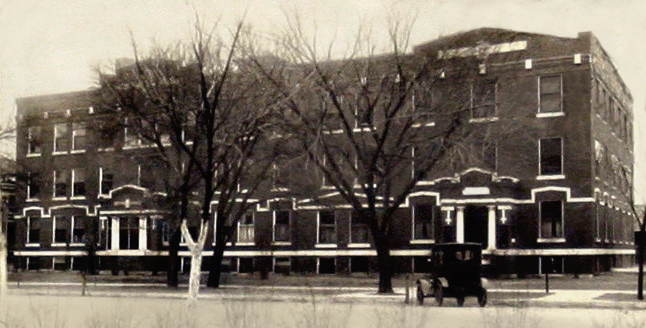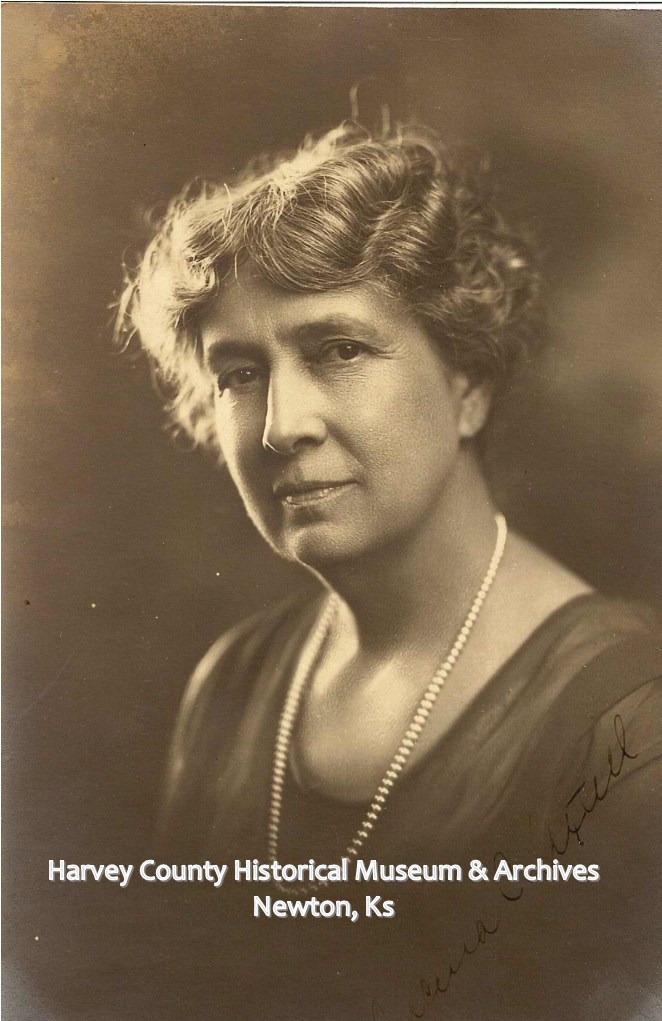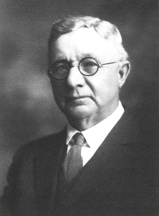Axtell Clinic, Over One Hundred Years of Quality Care
The Founding Doctors
Lucena Chase Axtell, MD
John Thomas Axtell, MD
John Thomas Axtell MD
The Axtell Clinic of today derives its origin and namesake from John Thomas Axtell MD. He started his practice in downtown Newton, locating his first clinic above Dickey drugstore and partnering with Dr. Noldler, in 1883. In those horse and buggy days Newton existed in large part because of the railroad. Cowboys, guns, and fights were how he initially built his practice. The medical profession, in the late 19th century, did not garner the respect from the general public it enjoys today. Physicians then, by today standards, were generally poorly educated and by no means guaranteed a respectable living.
But J.T. was on the cusp of a revolution in American medicine and he exemplified how it was to be practiced at the dawn of the 20th century. Lagging behind the Europeans, American medicine was not well respected for it lacked the more scientific approach being studied in Europe. Patients were not confident that physician intervention was much better than benign neglect. Harvard’s Jacob Bigelow argued that “the unbiased opinion of most medical men of sound judgment and long experience…the amount of death and disaster in the world would be less if all disease were left to itself.” Hospitals were where one went to die and as a choice of last resort. Only in the field of surgery were American physicians respected because of their vast experience with traumatic injuries in the Civil War.
With the development of the microscope and germ theory in Europe, medicine began the transition to a more scientific approach. Eventually the medical practice of treating what ailed a patient with the letting of a little blood lost favor. “The Lancet”, an important British Medical Journal still published today, derives it name from this early procedure. The treatment of infectious diseases with mustard plasters which blistered the skin, and with the poisons arsenic and mercury, were abandoned. Many doctors including J.T. and subsequent Axtell Clinic physicians studied in Europe; Paris, Munich, Vienna, Berlin, Berne, Zurich, and Brussels to bring these new approaches to America. Dr. Axtell and his wife were in Zurich observing surgery in fact when they learned of the assassination of Arch Duke Ferdinand of Austria and then witnessed his funeral procession in Vienna. These tensions which surrounded the start of WW1 complicated their passage back home as well. In contrast to the boat trip over to Europe months earlier, the return trip was delayed and absent music, lights, and the glowing tip of lit cigars on deck. The Axtells were now incredulous that they had to fear being sunk by destroyers when months earlier they were warmly welcomed and entertained by German physicians.
John Thomas Axtell MD, Education
J.T. completed his medical education at Bellevue Hospital in New York in 1883 where one of the pioneers in this transition in medicine stateside, William Henry Welch, started teaching laboratory classes to American students in 1882. Laboratory investigations were considered unimportant in medical education even in schools such as Harvard. Dr. Welch went on to John Hopkins in 1884 to help develop the medical curriculum there which would serve as the template for how all future medical doctors were educated at every other respected medical school in America. Dr. Axtell’s education continued at Bellevue for a year of post graduate work in 1886. During that year, 70,000 cases were treated in the “Out Door Department ”. Surgical cases ranged “ from those which required but little surgery to those of the most delicate and dangerous character.” The following year he returned to Newton and started Axtell hospital where he would treat up to 1000 cases a year.
John Thomas Axtell MD, Practice and Career
As a surgeon, J.T. Axtell’s practice reflected these new philosophies and he brought them to his practice in Newton all throughout his career. His progressive approach to medicine was critical to his success. No doubt his New York training exposed him to those at the forefront of medicine. European physicians were discovering the importance of the microscopic world of bacteria through the discoveries of Pasteur and Lister, but their understanding of these issues was slow to gain acceptance in the US. Carbolic acid spray was the first antiseptic used by Lister in 1865. He immediately began to see patients recover from surgery without developing fever and purulent wounds which spoiled what was otherwise a skillful and successful surgery. By 1875 Germany widely accepted this theory and French physicians were soon to follow. Here in the US however the concept of microscopic organisms boggled the mind and their omnipresence was unappreciated. Listerian surgery performed without profound attention to the detail of antisepsis at every step led to failures and longstanding opposition in the US. A little carbolic spray here or there was not enough. All the extra work it took to do this technique was burdensome as well. One can imagine the difficulty in fighting an enemy you could not yet even see.
No doubt Dr. Axtell graduated from medical school at a time in the U.S. when antiseptic surgical technique was far from standard procedure. But, in keeping with his progressive ways, he adapted to this new technique. Even without gloves, not to be used by Dr Axtell until 1906 as one of the first to do so in Kansas, he operated on two patients in the abdomen in 1895 only have them actually survive. Similar successes nationwide led to patient confidence and a growing respect for medicine in general and his practice specifically, which in turn began to flourish. One of his medical school classmates at the University of Michigan was William Mayo of Mayo Clinic Fame which he visited periodically in Rochester Minnesota. Traveling to watch others do surgery was common practice for physicians in those days.
The broad respect he enjoyed during his career is reflected by his appointment to the surgical staff at Bethany Hospital, a Methodist Hospital in Kansas City in 1895. At the College of Physicians and Surgeons also in Kansas City(the forerunner to the University of Kansas School of Medicine), he was on staff as an instructor in Orthopedic Surgery. “A Biographical History of Central Kansas Illustrated” subtitled, “Portraits of Many Well Known People of this section of the Great West, who have been or are prominent in its History and Development” took note of Dr. Axtell’s work and writings in 1909. “Dr. Axtell is a student and a forcible and instructive writer, and many papers have been published by the various medical societies, before which they have been read.”
He established the first private hospital in Kansas in 1887 and the first school of nursing in Kansas at Axtell Hospital. Axtell clinic existed in the 200 block of Broadway next to the hospital until just recently, on the same land that he purchased in 1882 at the start of his career.
Lucena Chase Axtell MD
His wife Lucena Chase Axtell also went to medical school, with two children in tow, graduating in 1897 from the College of Physicians and Surgeons in Kansas City and joined him in practice to be one of the pioneering women in medicine. She was recently recognized for being a “Local Legend” by the National Library of Medicine in 2006. Representative Todd Tiahrt who nominated her for this national recognition said of her “A woman far ahead of her time, she represents the ideal of what women physicians can do and accomplish.”
Read more about Lucena Chase Axtell here
Frank L. Abbey MD Joins the Practice
Dr. J. T.Axtell’s step sister married Dr. Frank L. Abbey who as a brother-in-law also joined him in practice. Drs. Axtell, Axtell, and Abbey developed a superior reputation both locally and beyond with patients coming to Newton from as far as California. This all-in-the-family approach to medicine began a legacy of employing a family related physician to Axtell Clinic through the generations uninterrupted even today, 120 years later.
After the first clinic over the drug store, the clinical work was moved to the hospital. Certainly clinical work in those days looked much different than it did in years to come. Much of the early work involved house calls…or worse. One early tale was that of Dr. Axtell being “accompanied” by cowboys with side arms to a camp outside of town to care for the fractured leg of a wounded comrade. He apparently showed himself well enough to survive the ordeal himself. The story of the clinic then becomes the story of the hospital as the clinic was housed inside the hospital until a new clinic building was constructed west of the hospital in 1947 which established it as a separate entity save for a walkway connecting it to the hospital. The original hospital and thus the clinic facilities went through many growth additions.








